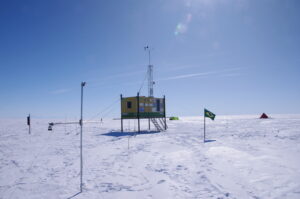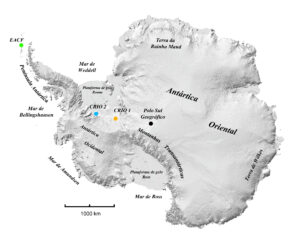
A new Brazilian scientific laboratory, the Criosfera 2, was installed this past summer on the Skytrain Ice Rise in Antarctica. The Criosfera 2, similar to its predecessor The Criosfera 1, is a completely self-sustaining laboratory. It uses only wind and solar energy to run year-round, as it collects meteorological information for the Brazilian National Institute of Meteorology (Inmet).
The module is essential for improving both meteorological and climate change forecast models and allows researchers to investigate the interactions between Antarctic and Brazilian air masses, furthering knowledge about cold fronts (friagens) that affect agricultural production.
In addition to automated meteorological data collection, the Criosfera 2 also continuously samples chemicals from the atmosphere. This research helps measure the concentration of black carbon and chemicals generated by industrial and mining activity in South America and Africa.

Criosfera 1 was first installed in 2014 with the help of our Antarctic Logistics & Expeditions (ALE) team. In the summer of 2022, ALE partnered once again with the Brazilian National Institute of Science and Technology of the Cryosphere (INCT Criosfera) to help facilitate the installation of Criosfera 2.
ALE helped scout out the site for the Crisofera 2, as well as supported its installment.
Before arriving in Antarctica, the laboratory was flown to Punta Arenas Chile and stored until Antarctica’s summer when it could be assembled. From there the unit was flown to ALE’s camp at Union Glacier, then moved by tractor train over 50 miles (81 km) to Skytrain Ice Rise.
ALE is thrilled to congratulate INCT Criosfera, along with the scientists from the State University of Rio de Janeiro (UERJ), National Institute for Space Research (INPE) and the Federal University of Rio Grande do Sul (UFRGS) on the successful launch of Criosfera 2.





